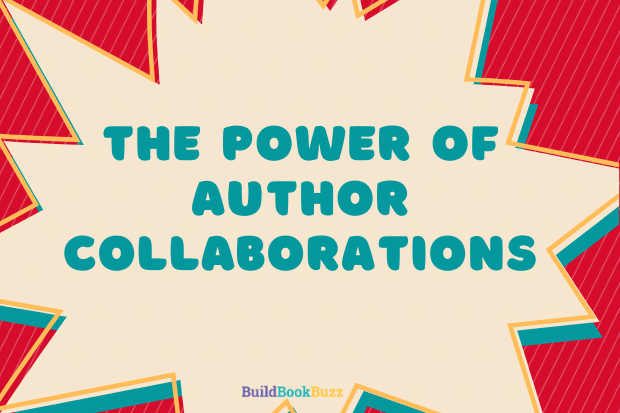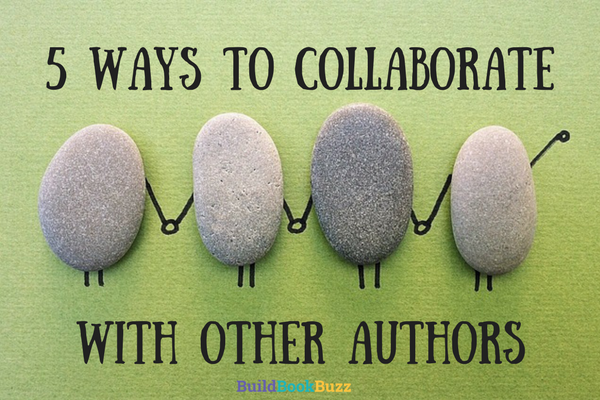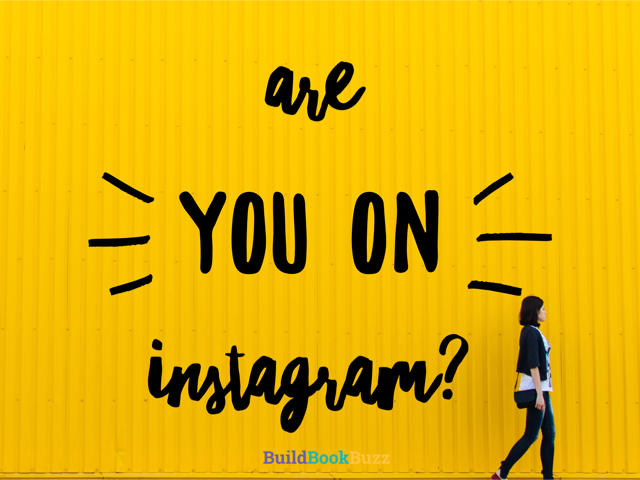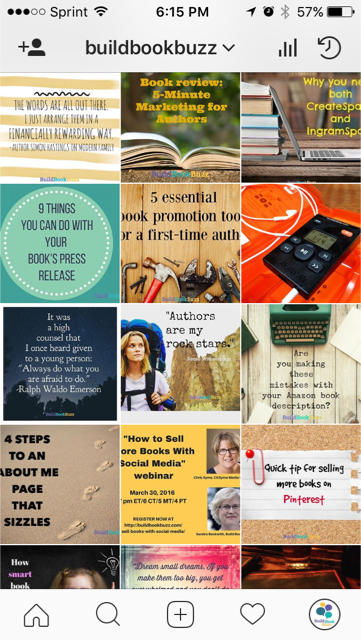 Have you been invited to collaborate with another author but hesitated because you weren’t sure if it was a good idea? Maybe you were reluctant to commit the time or energy, or maybe you felt you didn't know enough about that person to decide.
Who can blame you? Let’s be honest: Before you partner with someone, you want to be fairly confident that it will be a good, productive experience.
That confidence often comes from experience working with your collaborator on other projects or in other ways. For that reason, starting small might be the best way to approach teaming up with someone else.]]>
Have you been invited to collaborate with another author but hesitated because you weren’t sure if it was a good idea? Maybe you were reluctant to commit the time or energy, or maybe you felt you didn't know enough about that person to decide.
Who can blame you? Let’s be honest: Before you partner with someone, you want to be fairly confident that it will be a good, productive experience.
That confidence often comes from experience working with your collaborator on other projects or in other ways. For that reason, starting small might be the best way to approach teaming up with someone else.]]>Who can blame you? Let’s be honest: Before you partner with someone, you want to be fairly confident that it will be a good, productive experience.
That confidence often comes from experience working with your collaborator on other projects or in other ways. For that reason, starting small might be the best way to approach teaming up with someone else.
3 reasons to collaborate
But why would you do any of this in the first place? What’s in it for you? Here are three reasons I love author collaborations:
- You can help/entertain/educate/inform more readers when you partner with others who already reach the people you want to reach.
- It’s an easy and affordable way to expand the audience for your work.
- There’s potential for you to learn, grow, and improve when you partner with a colleague who could be in a position to teach you about something you need to learn.
And, honestly, it’s just plain fun to work with smart people you admire or respect.
4 easy author collaboration ideas
“Entry level” author collaborations can take many forms. You might . . .
- Ask another writer in your genre to share information about your new book with her e-mail list in exchange for sending details of her latest book to yours.
- Organize a virtual authors event with a bookstore or library.
- Include another author as a resource when pitching an article idea to a magazine or newspaper or a segment to a TV talk show.
- Form a blog circle with other authors targeting the same readers. Link to the blogs in your circle from your site, comment on their blog posts, agree to contribute content to theirs — and vice versa — on a regular basis.
(Get more ideas in “5 ways to collaborate with other authors.”)
I seem to be leaning more and more towards collaborations in my own businesses. Sometimes I do it simply for the pleasure of creating something new with a smart colleague. Other times, it’s because I know that our combined efforts will do more good than the solo approach.
Start small
Whether I’m doing a blog post swap or creating a course with a colleague, the collaboration is nearly always mutually beneficial.
The trick (for me, at least), is partnering with people who will deliver. We both have to do what we’ve committed to.
That’s why I recommend starting with a small collaboration before partnering on something bigger — co-writing a book or creating a Facebook group together. Beginning with something that involves less of a commitment will help both of you assess whether there’s potential for a positive and productive longer term partnership.
Give it a try
Finding someone to collaborate with might take time, but the rewards are worth the effort.
Do you have room for this in your author life? If so, start small. It could lead to something big.
How do you collaborate with others to reach your readers or achieve other goals?
(Editor’s note: This article was first published in August 2013. It has been updated and expanded.)
]]> “Collaborate” is my 2018 business theme.
I’ve got two significant collaborations in the works already. In one case, I’ve teamed up with a colleague to create a training program for authors. In the other, I’m partnering with another writer on a ghostwriting project.
I’m focusing on collaborations this year for a pretty simple reason: This approach can help me go farther faster.
More specifically, collaborations help me:
“Collaborate” is my 2018 business theme.
I’ve got two significant collaborations in the works already. In one case, I’ve teamed up with a colleague to create a training program for authors. In the other, I’m partnering with another writer on a ghostwriting project.
I’m focusing on collaborations this year for a pretty simple reason: This approach can help me go farther faster.
More specifically, collaborations help me:
- Work with a partner who has different skills.
- See situations, problems, and opportunities from someone else’s perspectives.
- Become involved with interesting projects I wouldn’t find on my own.
- Learn and grow.
I’ve got two significant collaborations in the works already. In one case, I’ve teamed up with a colleague to create a training program for authors. In the other, I’m partnering with another writer on a ghostwriting project.
I’m focusing on collaborations this year for a pretty simple reason: This approach can help me go farther faster.
More specifically, collaborations help me:
- Work with a partner who has different skills.
- See situations, problems, and opportunities from someone else’s perspectives.
- Become involved with interesting projects I wouldn’t find on my own.
- Learn and grow.
How might you collaborate?
I’m collaborating to create things, but collaborations can serve many purposes. Authors can collaborate with other authors in a myriad of ways that help all parties move forward.
Here are five ways to work together with other authors to create a win-win situation.
1. Email book news to each other’s email lists.
Find another author in your genre and offer to send book announcements to each other’s mailing lists.
If you have at least 200 names on your list, take this “refer a book” process up a few notches by joining the Books Go Social “Army of Authors” mailing list program. After joining, you’ll occasionally be offered books in your genre to promote to your list. You can decide which ones you do or don’t promote – you have control over that. Participating authors are rewarded.
2. Share beta readers.
Why should two authors in the same genre have to look under rocks to find ready, willing, and able beta readers?
Give each other access to your beta reader networks. Better yet, partner to create a shared group of beta readers you can both turn to when you’re ready for feedback. Make it official with a group name, a sign-up page that details expectations, and a dedicated mailing list you use to share information and offer books.
3. Create and sell an e-book bundle or box set.
Bundles with books from multiple authors sell well on Amazon because they give genre or topic fans an opportunity to “sample” several new authors at a cost that’s less than buying each book individually.
Novelists can collaborate with others in their niche, while nonfiction authors should focus on topics. If you’ve got a collection of Instant Pot recipes, for example, look for other authors with Instant Pot cookbooks. The author of a book about how to write a book might look for authors who have written books on other aspects of publishing, such as self-publishing and marketing.
4. Support each other on social media.
Every once in awhile, one of my most favorite people who just happens to be an author will email me with a request to help her share special news related to one of her books.
It might be a milestone number of reader reviews, a pre-order campaign, or a particularly significant media hit.
I am more than happy to help spread the news in my social networks. I am also comfortable asking her to do the same when I’ve got something that’s bigger than usual to share.
Find a couple of author buddies you can count on to do this for you, too.
5. Review your marketing materials before they’re finalized.
An author friend does this for me. I can’t underestimate the value fresh eyes and a good brain bring to the project.
I often reach a point where I’ve looked at that book description, announcement press release, or landing page so many times that I can’t be objective. Another author can point out missing details, confusing language, or boring text.
Nothing is too small for this review. Swap services for proofreading business cards, evaluating bookmarks or postcards, even checking over Amazon keywords.
Don’t compete, collaborate!
Instead of seeing another author in your niche as a competitor, view that person as a potential collaborator.
Benefits of taking a collaborative, rather than competitive, approach include:
- Reaching more of the right readers than you can on your own.
- Potentially discovering a new way of looking at your topic or genre.
- Reducing author isolation.
These are all good things, right?
Be open to the possibilities that could come your way when you collaborate with other authors.
Looking for someone to partner with? Join the Build Book Buzz Facebook group and post your request there. You might find your ideal collaborator.
How are you collaborating with other authors? Tell us in a comment.
]]> Are you on Instagram?
If you are, I'd like to use my Instagram business account to give your book some attention.
I'm about to make a few changes to that account that were inspired by Hilary Rushford's "Free Instagram Class" on how small businesses can use that social network more effectively. I tuned in to last week's webinar specifically because I wanted to start doing more with my Instagram business account and was looking for inspiration.
I got it.]]>
Are you on Instagram?
If you are, I'd like to use my Instagram business account to give your book some attention.
I'm about to make a few changes to that account that were inspired by Hilary Rushford's "Free Instagram Class" on how small businesses can use that social network more effectively. I tuned in to last week's webinar specifically because I wanted to start doing more with my Instagram business account and was looking for inspiration.
I got it.]]>If you are, I’d like to use my Instagram business account to give your book some attention.
I’m about to make a few changes to that account that were inspired by Hilary Rushford’s “Free Instagram Class” on how small businesses can use that social network more effectively. I tuned in to last week’s webinar specifically because I wanted to start doing more with my Instagram business account and was looking for inspiration.
I got it.
What I’ve been doing on Instagram
I’ve used my business account (versus my personal account) to consistently post my weekly blog image and occasionally post an image that reminds people that I’m not a blogging robot.
It’s lame.
I know that.
Hilary’s webinar gave me ideas about what I could be doing differently. One of the best “ahas!” I got from the free training was that I should view the images on my profile as a collage of photos that needs to be visually balanced.
This screenshot below from my Instagram profile about a year and a half ago is a good example of what you don’t want to do — every post but one is an image with text. Most of those text images come from blog posts.
It’s monotonous. There’s no visual variety.
What I’m going to do now
In order to figure out what types of images I can and should be sharing so I get both the requisite visual variety and relevant content for my Build Book Buzz brand, I needed to think about my purpose on that platform.
My goal here and on every social network I use is to help authors learn how to market their books.
I usually do that by providing links to helpful information online but that’s not possible with Instagram. Links are only clickable in profile descriptions and ads. So . . . I had to look at this network differently.
I had to shift away from providing how-to information to supporting authors in another way.
The solution is obvious by now, right?
I want to share images of your books!
By doing that with the full titles in the accompanying text (caption), I can bring more awareness to them.
Will it rock your world? Nope. Will it help you? Who knows? Will it hurt your book. No way!
Here’s what I’d like you to do
Will you let me to support your book with my Instagram account?
If yes, here’s what I’d like you to do — and please follow these instructions carefully:
- Follow my business account. Find me on the Instagram app by searching for “Build Book Buzz” or “BuildBookBuzz.” This is required. I will follow you back. Followers mean book exposure.
- Send me an email message with the subject line: Instagram. Click here to send the message. Attach a photo of your book cover. (Link not working for you? Email address is on about/contact page.) It can be just the book cover, you and your book, whatever — just make sure that the book is the main attraction. In the message, provide the full book title and your Instagram profile name so I can find and tag you easily.
- Follow the instructions in steps 1 and 2 carefully. I’ve set up an email rule so that all messages with an “Instagram” subject line go into a specific folder. If you don’t send what’s requested and I have to contact you, we will both be disappointed in resulting delays.
- Watch my Instagram feed for your book. Consider sharing it with your connections, too, so you have what marketers call “social proof” that people are talking about your book.
Note that if you don’t use Instagram, I won’t be able to share your book cover and title.
Thank you for helping me start using my account in a way that helps you. I appreciate it.
How do you use Instagram for book promotion? Tell us in a comment.
]]>